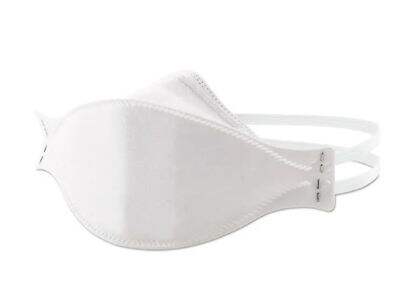There are many different types and functions for medical masks. Figuring out which one is right for you can be confusing. In this article, we’ll break down the myriad of medical masks and how they protect both you and others.
Surgical Masks vs N95 Respirators
Surgical masks are the most common type of medical mask you see out in public. They are less form-fitting than other masks and offer more protection than a bandanna or a scarf, covering potentially vulnerable areas of the face. Surgical masks are also effective barriers to protect the wearer from infectious droplets in the form of sneezes, coughs and other fluids.
What is an N95 respirator, and does it work?
An N95 respirator is a type of personal protective equipment that reduces your exposure to airborne particles, including small particles in the air, the agency says. They are also recommended for health care workers and people who are caring for people who are infected with the virus by the C.D.C. and the W.H.O. People in high-risk places or situations (or both) are also advised to wear mask.
The Function of Cloth Masks for COVID-19
Cloth masks have gained popularity during the COVID-19 panedemic. They served the public interest, to protect everyone from themselves and from each other. Although not as effective as surgical masks or N95 respirators, cloth mask can still help to reduce the amount of droplets being released into the air when worn properly.
Cloth masks should be constructed from at least several layers of fabric and should fit coextensively against the mouth and nose. They should also be washed frequently to maintain their efficacy. Cloth masks can be particularly useful when it’s difficult to stay at least six feet away from others, such as in highly trafficked areas or on public transportation.
Finding the Advantages of KN95 Masks for High-Risk Environments
KN95 masks are a type of respirator mask used in a similar process as N95 masks. They offer better filtration and are some of the most effective masks at stopping airborne particles, including viruses such as the one that causes COVID-19.

 EN
EN
 AR
AR
 BG
BG
 HR
HR
 CS
CS
 DA
DA
 NL
NL
 FI
FI
 FR
FR
 DE
DE
 EL
EL
 HI
HI
 IT
IT
 JA
JA
 KO
KO
 NO
NO
 PL
PL
 PT
PT
 RO
RO
 RU
RU
 ES
ES
 SV
SV
 CA
CA
 TL
TL
 IW
IW
 ID
ID
 LV
LV
 LT
LT
 SR
SR
 SK
SK
 SL
SL
 UK
UK
 VI
VI
 SQ
SQ
 ET
ET
 GL
GL
 HU
HU
 MT
MT
 TH
TH
 TR
TR

